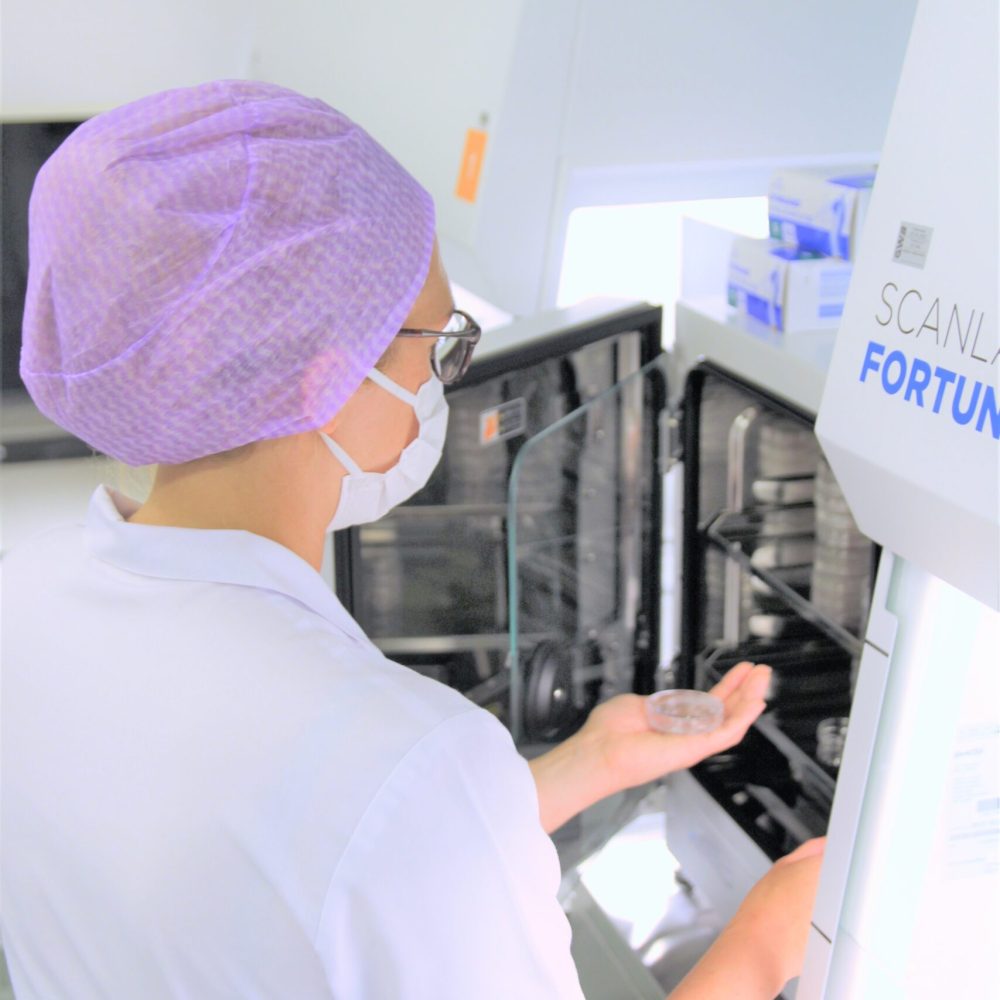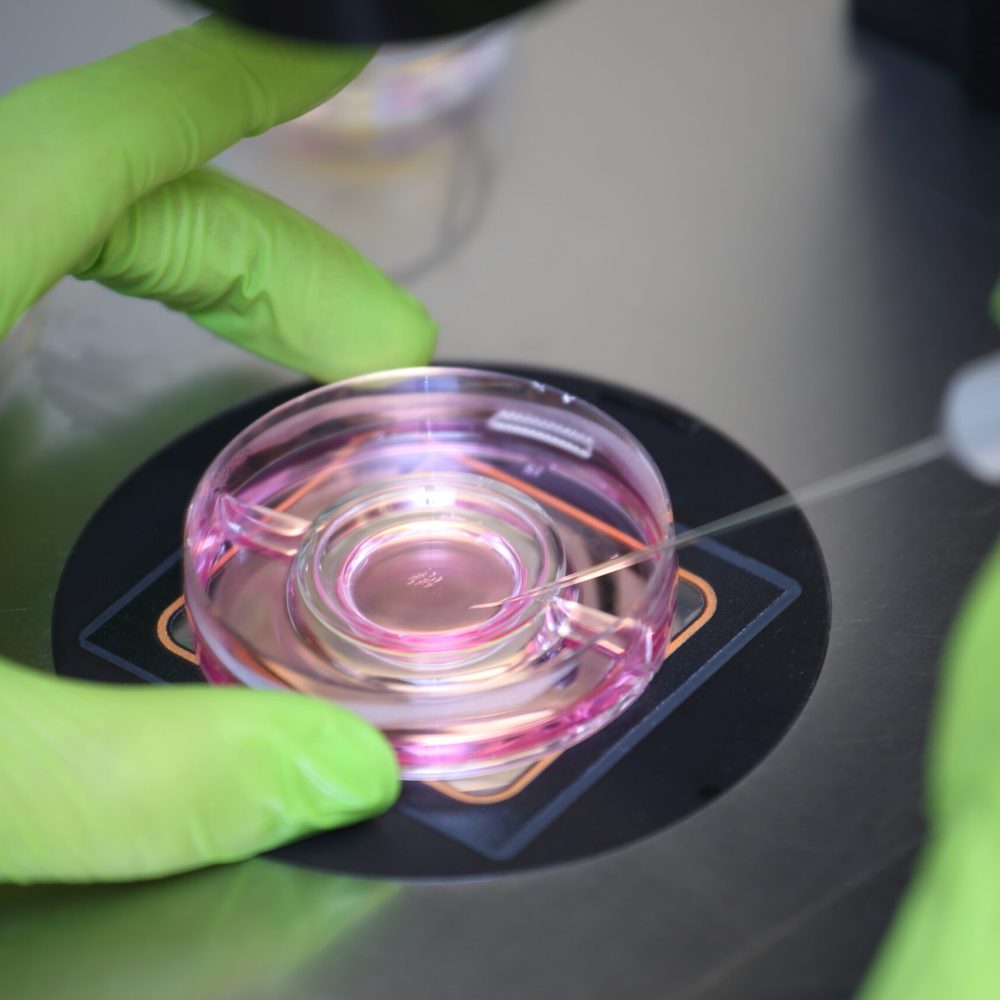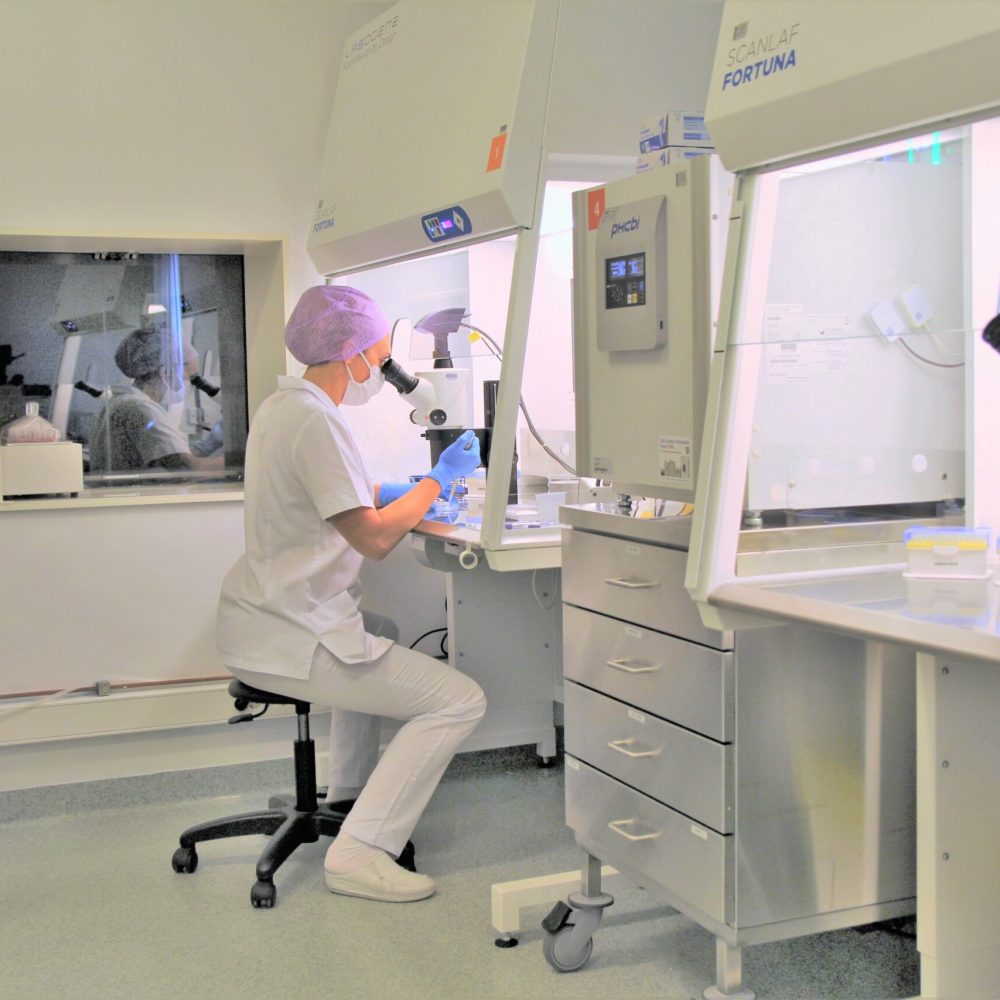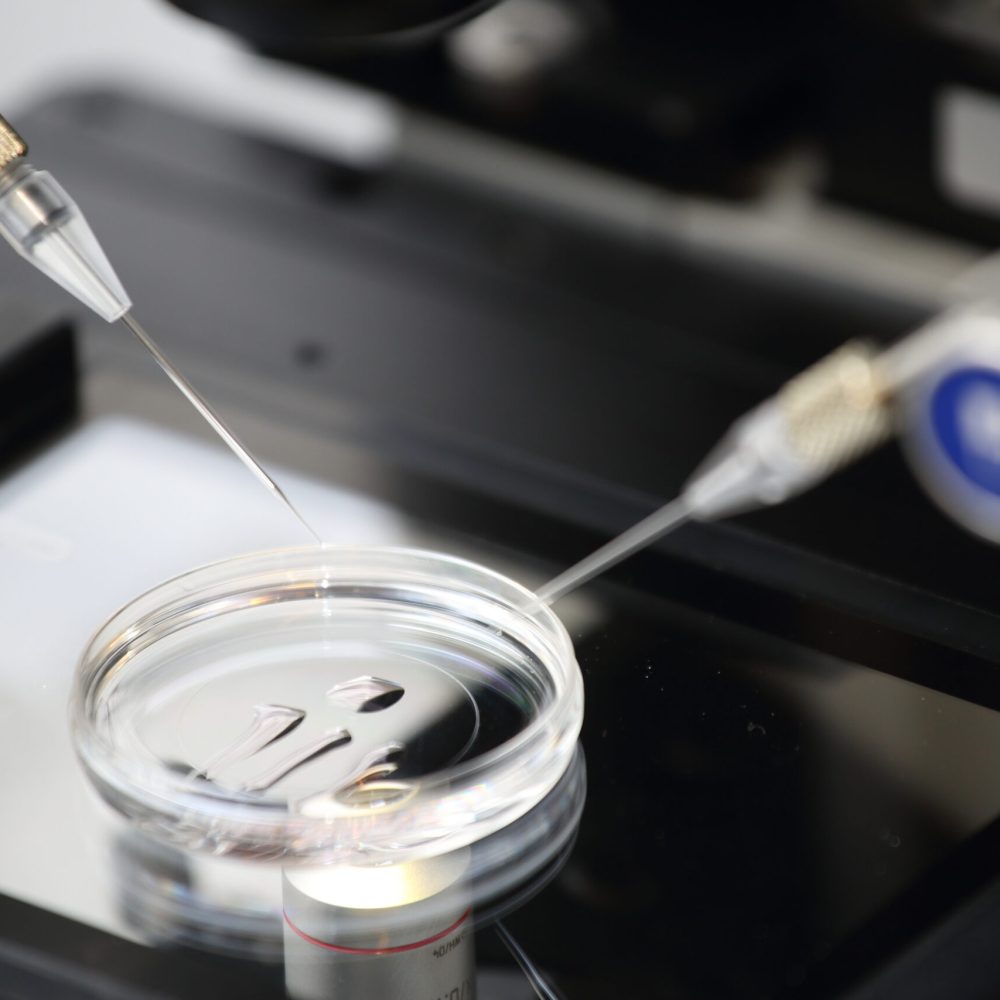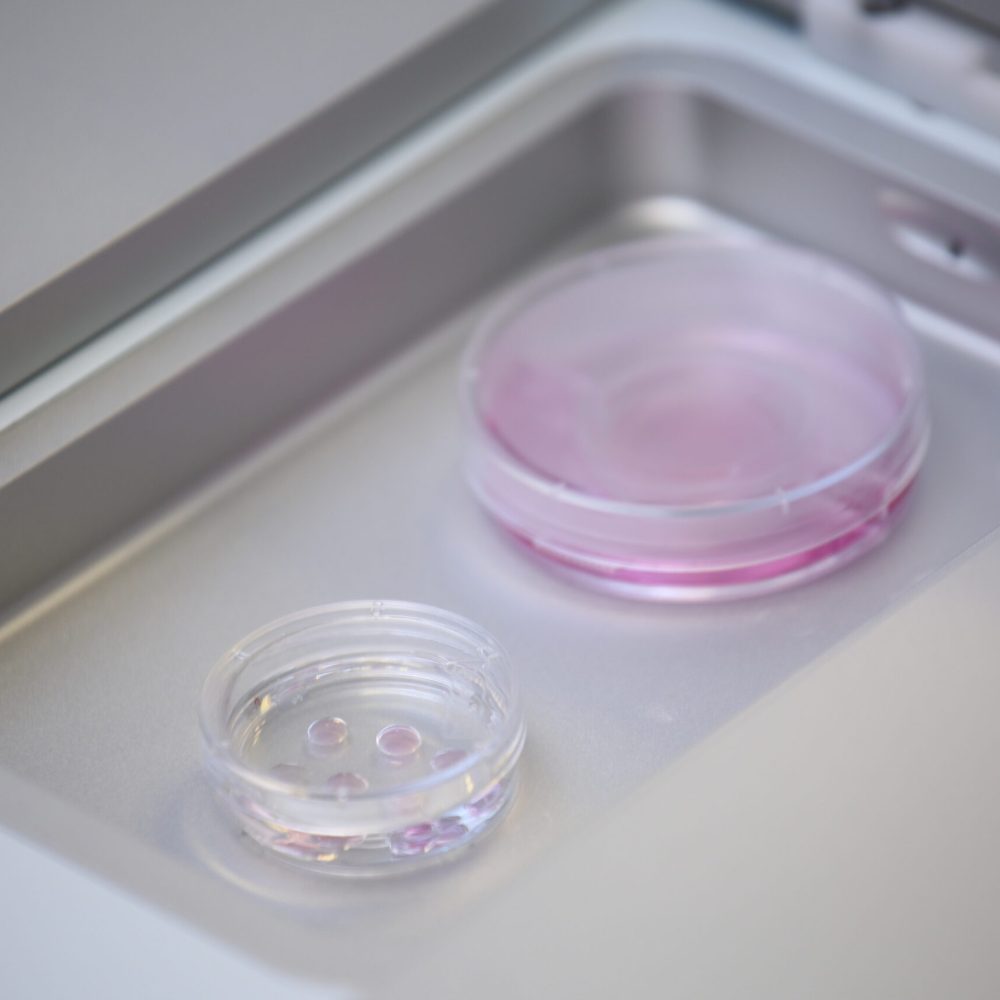In vitro fertilisation
IVF (in vitro fertilisation), or the fertilisation of an ova outside of the body, is the most frequently used method of fertility treatment in the world.
In Vitro Fertilization is the most frequently used method of fertility treatment in Estonia. With the help of IVF almost 10 million children have already been born in the world, and in Estonia more than 700 children are born each year with the help of IVF, which accounts for nearly 6% of all new-born children.
The main indication for IVF is when infertility is due to the absence, obstruction or probable dysfunction of the fallopian tubes. IVF treatment is also used for other causes of infertility – changes in a man’s sperm, ovulation disorders, and infertility of unknown cause.
Sperm from a woman’s spouse, a specific male to whom she is not married, or a donor sperm, can be used to perform in vitro fertilisation.
